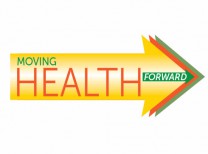A recent study by the National Small Business Association determined that 93 percent of small business owners recognized that the health of their workers impacts their business’s bottom line.1 However, when it comes to implementing an employee wellness program, most of them don’t know where to start.
Fortunately for employers in the Coachella Valley, a free and comprehensive tool kit is now available from the Clinton Foundation as part of their ongoing work locally and nationally entitled the Clinton Health Matters Initiative. The goal of the program is to provide a framework on how to create a continual and self-sustaining program, as well as a comprehensive guide on how to implement free and low-cost programs for better health.
“This initiative is dedicated to addressing three of the top contributors to poor health and performance: physical inactivity, inadequate nutrition, and poor stress management,” says CHMI CEO Rain Henderson. “We believe focusing on these key areas gives employers the greatest opportunity to promote health and reduce disease, while also driving improved morale, increased engagement, and enhanced performance.”
The Employee Health Improvement Framework has three goals:
- Provide employers with a comprehensive survey of the landscape of employee wellness programs and their effect on employee productivity.
- To change the conversation around the issue of employee health and emphasize the importance of this matter in the overall scheme of community, national, and global well-being.
- To motivate employers to improve, innovate, and lead on the issue of employee health improvement.
The Framework has been designed to assist employers in every phase of program development, from those just beginning to design wellness programs to leaders in the field who are looking for the next best innovation on the issue. It is intended to support the work of employers in all sectors – private, public, and non-profit – across all industries and contains input from key thought leaders, content experts, executive management professionals, and academics. It is also flexible by intentional design to allow employers a menu of options related to employee health improvement, rather than a proscriptive list of mandates and requirements, and encompasses real-world examples of best practices that result in positive outcomes – both measurable and scalable.
The Comprehensive Guide to Worksite Well-being, entitled Your Health Matters, incorporates a thorough approach to building a culture of health in the workplace and focuses on simple, yet effective, steps organizations can follow to implement a well-being program. It includes tools and materials employers can print as is (or tailor) to use on their journey, in addition to providing recommendations for other resources, both local and national.
The CHMI’s approach to building a culture of health includes six steps which are discussed in detail in the tool kit and supported by interactive webinars (all elements are free):
- Build support for employee wellness. Gain leadership buy-in that ensures success, and form a well-being team that consists of employees at all levels.
- Understanding your organization and its wellness needs. Gather employee input and take inventory of strengths and opportunities within your workplace.
- Determine your strategy and plan. Identify and prioritize your focus areas of health and well-being and create a roadmap.
- Implement offerings. Leverage program resources; take the “baby step” approach in implementing program offerings.
- Communicate and launch. Spread the word about your program to employees; educate and engage employees in well-being on an ongoing basis.
- Evaluate results. Review your program results, revise as needed, and celebrate success.
If you have been thinking about starting a wellness program at your company, now is the time, and the CHMI’s tool kit shows you how you can do it.
For more information or to receive your workplace wellness tool kit, contact Clinton Health Matters Initiative Regional Director Tricia Gehrlein at [email protected].
References: 1) Workplace Wellness Programs in Small Business: Impacting the Bottom Line. Retrieved December 11, 2015, from: http://www.nsba.biz/wp-content/uploads/2012/09/wellness-survey-v3.pdf

















































Comments (0)